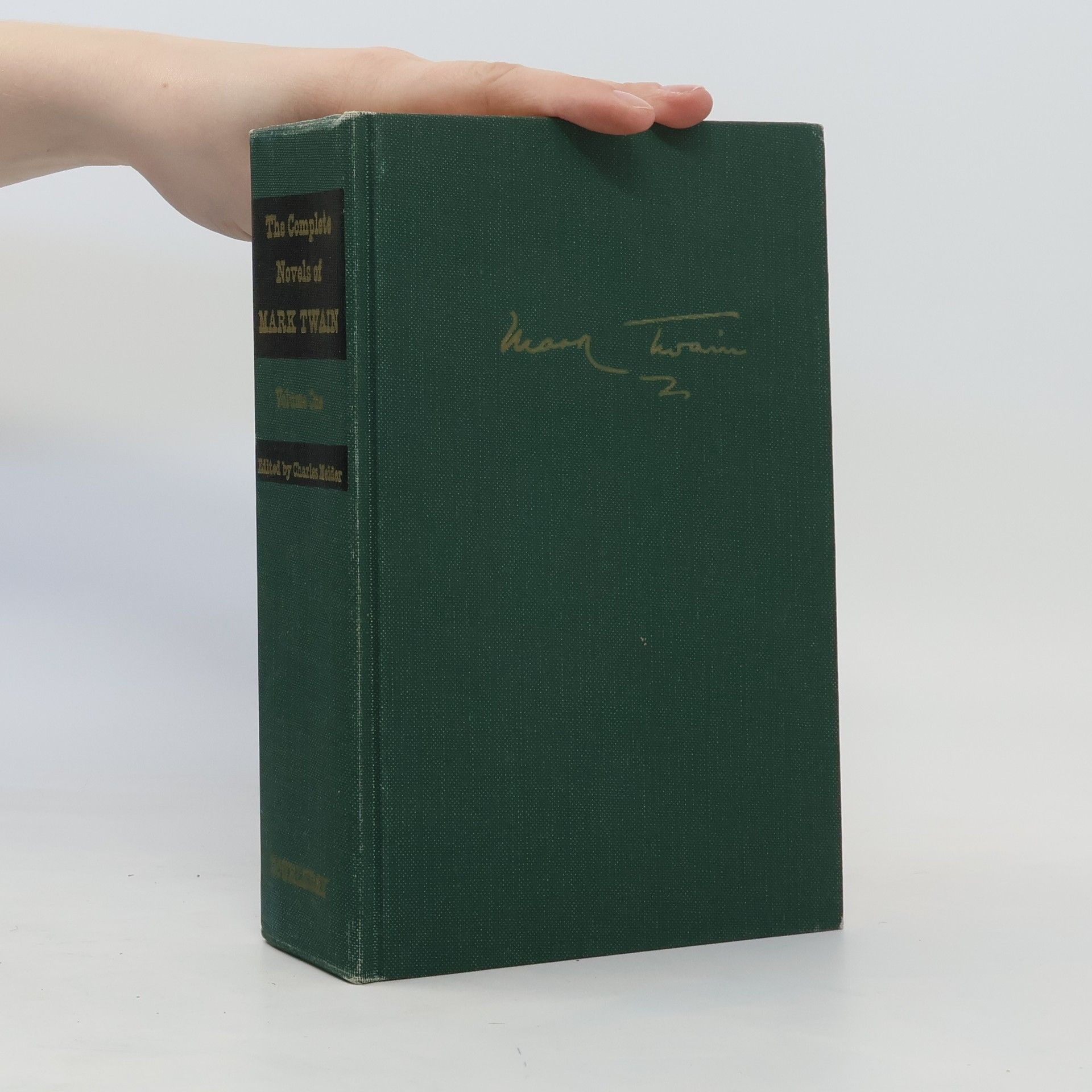Collects together 65 of the best of Mark Twain's short stories. It opens with The Notorious Jumping Frog of Calaveras County, a famous early story set on the Western frontier, and spans nearly 50 years during which Twain wrote a variety of short stories.
Charles Neider Boeken
Charles Neider was een vooraanstaand redacteur en autoriteit op het gebied van het werk van Mark Twain. Zijn uitgebreide betrokkenheid bij de geschriften van Twain, met name van de late jaren '50 tot het midden van de jaren '80, onthulde een breder spectrum van Twains oeuvre dat verder reikte dan zijn beroemdste romans. Neiders collecties, zoals De volledige korte verhalen van Mark Twain en De autobiografie van Mark Twain, waren cruciaal voor het waarderen van de volledige omvang van Twains literaire productie. Zijn benadering was gericht op zorgvuldige selectie en presentatie van Twains diverse werken, waardoor een dieper begrip en erkenning van zijn literaire nalatenschap werd bevorderd.






This is the first and most complete collection of all 136 humorous sketches and tales that Samuel Clemens (1835–1910), a.k.a. Mark Twain, started writing as a young reporter for various newspapers and magazines and later saw fit to issue in book form. Many pieces appeared in rare, first printings, only to be dropped in subsequent editions; for this reason, readers will encounter a number of yarns and tall tales unavailable elsewhere, even in the collected works. More unvarnished than his short stories or novels, and more willing to indulge in fun for its own sake, these sketches comprise a substantial share of his literary apprenticeship and legacy. As brilliant, representative nuggets of Twain's humor in its purest form, they carry the imprint of Twain's wit, imagination, and humanism, his fresh and always idiomatic prose. From 1862's "Curing a Cold" to 1904's "Italian Without a Master," this collection allows readers to share Twain's vision of life as a strange and comic affair. No one interested in American humor (or in need of a good laugh) can long remain indifferent to this uproarious book
Scottish novelist, poet, and essayist Robert Louis Stevenson (18501894) was a writer of power and originality, who penned such classics as Treasure Island, Kidnapped, and The Weir of Hermiston. The editor has collected in convenient form Stevenson's short fiction, including the complete New Arabian Nights and The Strange Case of Dr. Jekyll and Mr. Hyde, as well as ghost stories, medieval romances, farces, horror stories, and the South Sea Tales. This volume amply illustrates Stephenson’s wide range and enduring appeal.Lodging for the night --Suicide Club: Story of the young man with the cream tarts / Story of the physician and the Saratoga trunk / Adventure of the Hansom cab --Rajah's Diamond: Story of the bandbox / Story of the young man in Holy Orders / Story of the house with the green blinds / Adventure of Prince Florizel and a detective --Providence and the guitar --Sire de Maletroit's door --Will o' the mill --Story of a lie --Thrawn Janet --Merry men --Body-snatcher --Markheim --Strange case of Dr. Jekyll and Mr. Hyde --Bottle imp --Beach of Falesa --Isle of Voices.
The Autobiography of Mark Twain
In Defense of Naps, Bacon, Martinis, Profanity, and Other Indulgences
- 562bladzijden
- 20 uur lezen
Mark Twain's autobiography stands as a monumental work in American literature, comparable to those of Benjamin Franklin and Henry Adams. It showcases Twain's distinctive style and imaginative storytelling, blending humor with poignant reflections on life. The narrative captures a wide scope of experiences, filled with both laughter and tragedy, highlighting Twain's significance as a literary figure. This compelling account offers deep insights into his character and the American experience.
Focusing on the shortcomings of Kafka's literature, this analysis explores how these deficiencies have influenced his popularity. First published in 1949, it serves as a significant historical document, providing valuable insights for literature students interested in understanding Kafka's impact and the complexities of his work.

